-
 Bitcoin
Bitcoin $115200
-2.68% -
 Ethereum
Ethereum $3601
-5.16% -
 XRP
XRP $3.035
-2.96% -
 Tether USDt
Tether USDt $0.9997
-0.04% -
 BNB
BNB $764.5
-5.43% -
 Solana
Solana $168.1
-5.92% -
 USDC
USDC $0.9998
-0.02% -
 Dogecoin
Dogecoin $0.2090
-4.80% -
 TRON
TRON $0.3272
-0.49% -
 Cardano
Cardano $0.7306
-5.00% -
 Hyperliquid
Hyperliquid $39.16
-12.22% -
 Stellar
Stellar $0.3967
-4.96% -
 Sui
Sui $3.566
-5.95% -
 Chainlink
Chainlink $16.55
-6.57% -
 Bitcoin Cash
Bitcoin Cash $552.3
-3.90% -
 Hedera
Hedera $0.2516
-4.69% -
 Avalanche
Avalanche $21.99
-5.75% -
 Toncoin
Toncoin $3.621
-0.28% -
 Ethena USDe
Ethena USDe $1.000
-0.03% -
 UNUS SED LEO
UNUS SED LEO $8.951
0.02% -
 Litecoin
Litecoin $105.9
-3.59% -
 Shiba Inu
Shiba Inu $0.00001232
-5.00% -
 Polkadot
Polkadot $3.640
-5.55% -
 Uniswap
Uniswap $9.048
-7.03% -
 Monero
Monero $301.8
-1.51% -
 Dai
Dai $0.9999
-0.01% -
 Bitget Token
Bitget Token $4.334
-3.66% -
 Pepe
Pepe $0.00001064
-6.17% -
 Cronos
Cronos $0.1367
-5.78% -
 Aave
Aave $259.2
-4.59%
Layer2 Getting Started Guide: How to Choose Between Arbitrum and Optimism?
Arbitrum offers faster transactions and lower fees, while Optimism focuses on simplicity and decentralization, both enhancing Ethereum's scalability.
May 26, 2025 at 01:35 am
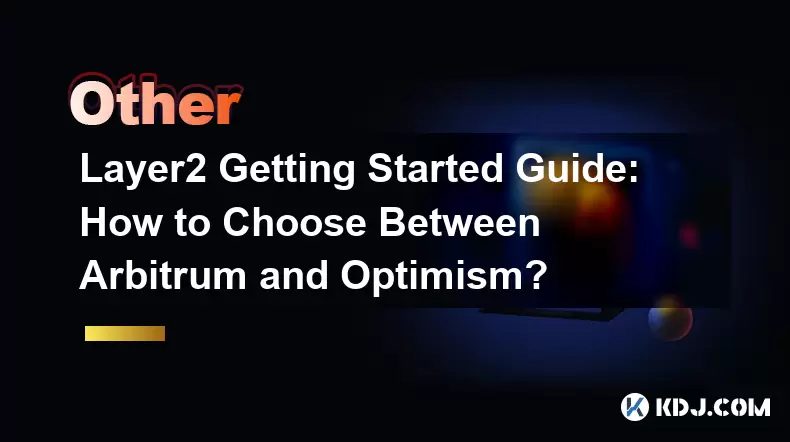
In the burgeoning world of blockchain technology, Layer2 solutions have emerged as critical tools for scaling and enhancing the efficiency of transactions on Ethereum. Among the prominent Layer2 solutions, Arbitrum and Optimism stand out due to their unique approaches to improving the Ethereum ecosystem. This guide will help you understand the key differences between these two platforms and guide you on how to choose the right one for your needs.
Understanding Layer2 Solutions
Layer2 solutions are protocols built on top of a blockchain, specifically designed to improve scalability and efficiency without compromising on security. They achieve this by processing transactions off the main Ethereum network (Layer1) and then settling them back on it. Arbitrum and Optimism are both optimistic rollup solutions, meaning they assume transactions are valid by default and only run fraud proofs if a transaction is challenged.
Key Features of Arbitrum
Arbitrum offers several features that make it an attractive choice for developers and users alike. It uses an optimistic rollup approach but introduces a unique method called Arbitrum Rollup. This method allows for the execution of smart contracts off-chain, which significantly reduces the load on the Ethereum network. Additionally, Arbitrum supports Ethereum Virtual Machine (EVM) compatibility, which means developers can easily port their existing Ethereum smart contracts to Arbitrum without significant modifications.
Key Features of Optimism
Optimism, on the other hand, also employs an optimistic rollup strategy but focuses on simplicity and ease of use. Optimism aims to replicate the Ethereum experience as closely as possible, making it an excellent choice for developers who want minimal changes to their existing code. It also supports EVM compatibility, ensuring that smart contracts can be deployed on Optimism with ease. Another notable feature of Optimism is its commitment to decentralization, with plans to transition to a fully decentralized sequencer.
Comparing Transaction Speeds and Costs
When choosing between Arbitrum and Optimism, transaction speed and cost are critical factors. Arbitrum typically offers faster transaction processing due to its advanced rollup technology. It also tends to have lower gas fees compared to the Ethereum mainnet, although these can vary based on network congestion. Optimism, while also providing significant speed and cost improvements over Ethereum, might have slightly higher fees and slower transaction times compared to Arbitrum. However, the difference is often marginal and may not be a deciding factor for many users.
Ecosystem and Developer Support
The ecosystem and developer support available on each platform can greatly influence your decision. Arbitrum has a growing ecosystem with many projects and decentralized applications (dApps) already built on it. Its robust developer tools and documentation make it easier for developers to build and deploy applications. Optimism also boasts a strong ecosystem, with a focus on fostering developer communities and providing comprehensive support. Both platforms have active communities and forums where developers can seek help and share knowledge.
Security and Decentralization
Security and decentralization are paramount in the blockchain space. Arbitrum and Optimism both prioritize these aspects, but their approaches differ. Arbitrum uses a more complex architecture that includes multiple layers of security checks, which can enhance security but may also introduce additional complexity. Optimism, with its simpler design, aims for a more straightforward security model, which can be easier to audit and understand. Both platforms are working towards full decentralization, but Optimism has been more vocal about its plans to transition to a decentralized sequencer, which could appeal to users who value decentralization highly.
How to Get Started with Arbitrum
To get started with Arbitrum, follow these steps:
- Install a Compatible Wallet: Use a wallet like MetaMask that supports Arbitrum. Ensure your wallet is connected to the Arbitrum network.
- Bridge Assets: Use the Arbitrum bridge to transfer your Ethereum assets to the Arbitrum network. Go to the Arbitrum bridge website, connect your wallet, and initiate the transfer.
- Interact with dApps: Explore the various dApps available on Arbitrum. You can interact with decentralized exchanges, lending platforms, and more.
- Develop on Arbitrum: If you're a developer, use the Arbitrum developer tools to deploy your smart contracts. Follow the documentation on the Arbitrum website to get started.
How to Get Started with Optimism
Getting started with Optimism is similarly straightforward:
- Install a Compatible Wallet: Use a wallet like MetaMask that supports Optimism. Connect your wallet to the Optimism network.
- Bridge Assets: Use the Optimism bridge to move your Ethereum assets to the Optimism network. Visit the Optimism bridge website, connect your wallet, and start the transfer process.
- Explore dApps: Engage with the dApps built on Optimism. From DeFi platforms to NFT marketplaces, there's a wide range of applications to explore.
- Develop on Optimism: As a developer, leverage the Optimism developer tools to deploy your smart contracts. Refer to the Optimism documentation for detailed instructions.
Choosing Between Arbitrum and Optimism
When deciding between Arbitrum and Optimism, consider your specific needs and priorities. If you value faster transaction speeds and potentially lower fees, Arbitrum might be the better choice. Its advanced rollup technology and growing ecosystem make it an excellent option for those looking to maximize performance. On the other hand, if you prefer a simpler, more Ethereum-like experience and are keen on a platform that is actively working towards full decentralization, Optimism could be more suitable.
Both platforms offer robust solutions for scaling Ethereum, and your choice will depend on the specific features and ecosystem support that align with your goals. Whether you're a user looking to interact with dApps or a developer aiming to build on Layer2, understanding the strengths and weaknesses of each platform is crucial for making an informed decision.
Frequently Asked Questions
Q: Can I use both Arbitrum and Optimism simultaneously?
Yes, you can use both Arbitrum and Optimism simultaneously. You would need to manage your assets across different Layer2 networks using their respective bridges. However, keep in mind that you'll need to track your assets and transactions on each network separately.
Q: Are there any risks associated with using Layer2 solutions like Arbitrum and Optimism?
While both Arbitrum and Optimism prioritize security, there are inherent risks associated with using Layer2 solutions. These include smart contract vulnerabilities, potential delays in transaction finality, and the risk of bridge hacks. It's essential to stay informed about the security measures and updates from both platforms.
Q: How do I move my assets back to the Ethereum mainnet from Arbitrum or Optimism?
To move your assets back to the Ethereum mainnet from Arbitrum, use the Arbitrum bridge. Connect your wallet, select the assets you want to transfer, and initiate the process. For Optimism, use the Optimism bridge in a similar manner. Ensure you follow the instructions carefully and be aware that the process may take some time due to withdrawal periods.
Q: Can I use the same smart contract on both Arbitrum and Optimism?
Yes, you can use the same smart contract on both Arbitrum and Optimism if it is EVM-compatible. However, you will need to deploy the contract separately on each network. Both platforms provide tools and documentation to help you deploy and manage your smart contracts effectively.
Disclaimer:info@kdj.com
The information provided is not trading advice. kdj.com does not assume any responsibility for any investments made based on the information provided in this article. Cryptocurrencies are highly volatile and it is highly recommended that you invest with caution after thorough research!
If you believe that the content used on this website infringes your copyright, please contact us immediately (info@kdj.com) and we will delete it promptly.
- Cardano Price, Pi Network, and Crypto Presales: What's the Buzz?
- 2025-08-02 08:50:12
- XRP Fund Success: Teucrium CEO Reveals Trillions on the Horizon
- 2025-08-02 09:10:12
- Challenge Coins: More Than Just Collectibles – A Military Tradition
- 2025-08-02 08:30:12
- Under the Radar: Hunting for 100x Crypto Gems in a Pi Network World
- 2025-08-02 08:30:12
- Bitcoin, Solana, and Altcoin Season: What's Hot and What's Not?
- 2025-08-02 07:10:12
- Toncoin, Rollblock, and the Token Offering Landscape: A New York Minute
- 2025-08-02 07:10:12
Related knowledge

What is the difference between a blockchain and a database?
Aug 01,2025 at 09:36pm
Understanding the Core Structure of a BlockchainA blockchain is a decentralized digital ledger that records data in a series of immutable blocks linke...

What is a hash in a blockchain?
Aug 02,2025 at 05:28am
Understanding the Concept of Hash in BlockchainA hash in the context of blockchain technology refers to a unique digital fingerprint generated by a cr...
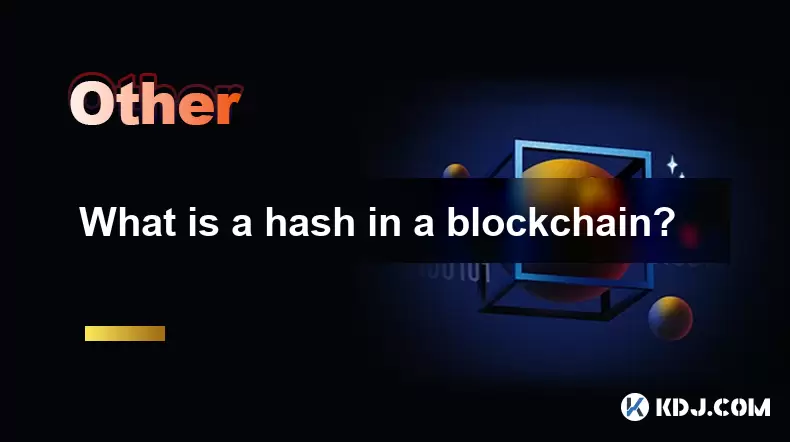
What is a hash in a blockchain?
Aug 02,2025 at 04:43am
Understanding the Concept of Hash in BlockchainA hash in the context of blockchain technology refers to a unique digital fingerprint generated by a cr...
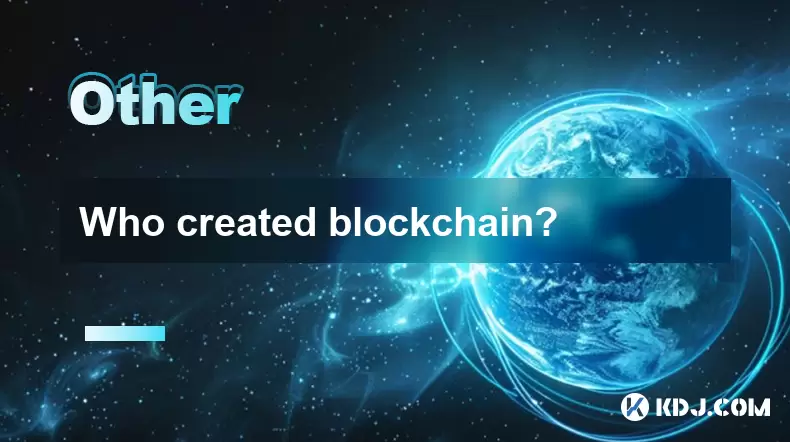
Who created blockchain?
Aug 02,2025 at 05:15am
What Is Blockchain and Why Does Its Origin Matter?Understanding who created blockchain begins with recognizing what blockchain actually is. Blockchain...
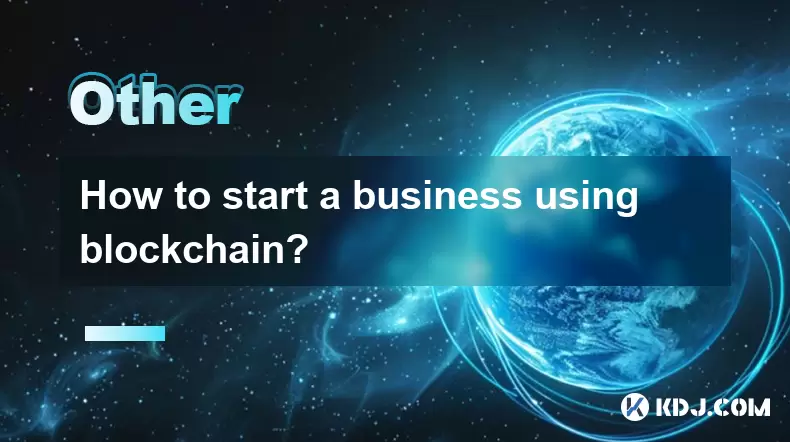
How to start a business using blockchain?
Jul 28,2025 at 12:36am
Understanding the Basics of Blockchain TechnologyBefore diving into the process of starting a business using blockchain, it's crucial to understand wh...
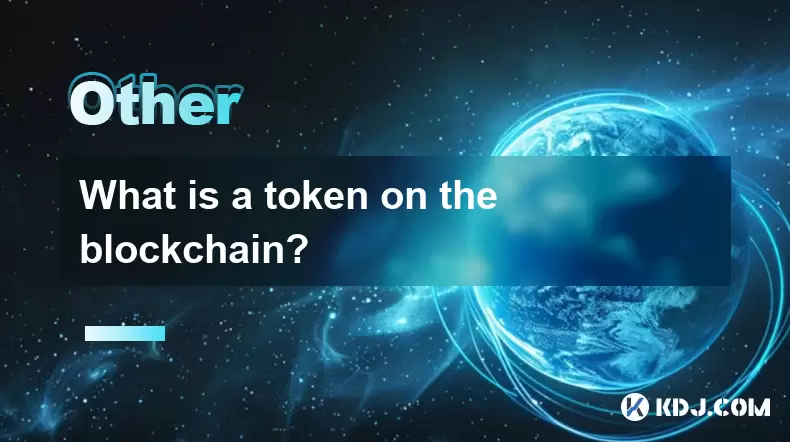
What is a token on the blockchain?
Jul 21,2025 at 07:00am
Understanding the Concept of a TokenIn the realm of blockchain technology, a token is a digital representation of an asset or utility that exists on a...

What is the difference between a blockchain and a database?
Aug 01,2025 at 09:36pm
Understanding the Core Structure of a BlockchainA blockchain is a decentralized digital ledger that records data in a series of immutable blocks linke...

What is a hash in a blockchain?
Aug 02,2025 at 05:28am
Understanding the Concept of Hash in BlockchainA hash in the context of blockchain technology refers to a unique digital fingerprint generated by a cr...

What is a hash in a blockchain?
Aug 02,2025 at 04:43am
Understanding the Concept of Hash in BlockchainA hash in the context of blockchain technology refers to a unique digital fingerprint generated by a cr...

Who created blockchain?
Aug 02,2025 at 05:15am
What Is Blockchain and Why Does Its Origin Matter?Understanding who created blockchain begins with recognizing what blockchain actually is. Blockchain...

How to start a business using blockchain?
Jul 28,2025 at 12:36am
Understanding the Basics of Blockchain TechnologyBefore diving into the process of starting a business using blockchain, it's crucial to understand wh...

What is a token on the blockchain?
Jul 21,2025 at 07:00am
Understanding the Concept of a TokenIn the realm of blockchain technology, a token is a digital representation of an asset or utility that exists on a...
See all articles

























































































